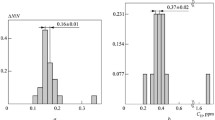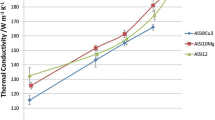Abstract
Aluminum alloys are very popular in a variety of technical applications. The strong influence of hydrogen on the properties of aluminum alloys is known, however, as in the case of steels; it is continuously increasing as new alloys with extreme properties are developed and introduced. Scientific research in the field of the hydrogen effect on the properties of aluminum alloys is mainly focused on the fundamental aspects such as the diffusion coefficients of hydrogen in aluminum, possible types of hydrogen traps, and their effect on the microstructure of alloys. At the same time, the industry has a problem of cracking ingots and semi-finished products (sheets, pipes, and plates), including their further processing and welding. In contrast to the high-strength steels, scientific research does not actually provide specific values for critical hydrogen concentration. The problem of separating the hydrogen adsorbed on the surface and dissolved during measurements has not been solved. There are only a few types of aluminum alloy reference specimens. The article is intended to partially fill this gap. It provides specific examples of the study of technological problems and proposes the measurement methods that allow the separation of hydrogen dissolved and adsorbed on the surface.
Access this chapter
Tax calculation will be finalised at checkout
Purchases are for personal use only
Similar content being viewed by others
References
Liu, P., Matsumoto, R.: Temperature dependence of vacancy concentration and void growth mechanism in al with constant hydrogen concentration: A first-principles study. Eng. Fract. Mech. 216, 106508 (2019). https://doi.org/10.1016/j.engfracmech.2019.106508
Toda, H., Hidaka, T., Kobayashi, M., Uesugi, K., Takeuchi, A., Horikawa, K.: Growth behavior of hydrogen micropores in aluminum alloys during high-temperature exposure. Acta Mater. 57(7), 2277 (2009). https://doi.org/10.1016/j.actamat.2009.01.026
Thomas, P., Gruzleski, J.: Threshold hydrogen for pore formation during the solidification of aluminum alloys. Metall. Trans. B 9(1), 139 (1978)
Bhuiyan, M.S., Tada, Y., Toda, H., Hang, S., Uesugi, K., Takeuchi, A., Sakaguchi, N., Watanabe, Y.: Influences of hydrogen on deformation and fracture behaviors of high Zn 7xxx aluminum alloys. Int. J. Fract. 200(1–2), 13–29 (2016)
Li, X., Cao, Y., He, L., Guo, Y., Cui, J.: Relationships between casting parameters and inclusions on the hydrogen content in 1050 alloy. Steel Res. Int. 84(12), 1223–1229 (2013)
Atwood, R.C., Sridhar, S., Zhang, W., Lee, P.D.: Diffusion-controlled growth of hydrogen pores in aluminium-silicon castings: in situ observation and modelling. Acta Mater. 48(2), 405–417 (2000). https://doi.org/10.1016/S1359-6454(99)00363-8
Toda, H., Minami, K., Koyama, K., Ichitani, K., Kobayashi, M., Uesugi, K., Suzuki, Y.: Healing behavior of preexisting hydrogen micropores in aluminum alloys during plastic deformation. Acta Mater. 57(15), 4391–4403 (2009). https://doi.org/10.1016/j.actamat.2009.06.012
Lee, P.D., Hunt, J.D.: Hydrogen porosity in directional solidified aluminum copper alloys: in situ observation. Acta Mater. 45(10), 4155–4169 (1997). https://doi.org/10.1016/S1359-6454(97)00081-5
Bond, G.M., Robertson, I.M., Birnbaum, H.K.: The influence of hydrogen on deformation and fracture processes in high-strength aluminum alloys. Acta Metall. 35(9), 2289–2296 (1987). https://doi.org/10.1016/0001-6160(87)90076-9
Song, R.G., Tseng, M.K., Zhang, B.J., Liu, J., Jin, Z.H., Shin, K.S.: Grain boundary segregation and hydrogen-induced fracture in 7050 aluminium alloy. Acta Mater. 44(8), 3241–3248 (1996). https://doi.org/10.1016/1359-6454(95)00406-8
Toda, H., Masuda, S., Batres, R., Kobayashi, M., Aoyama, S., Onodera, M., Furusawa, R., Uesugi, K., Takeuchi, A., Suzuki, Y.: Statistical assessment of fatigue crack initiation from sub-surface hydrogen micropores in high-quality die-cast aluminum. Acta Mater. 59(12), 4990–4998 (2011). https://doi.org/10.1016/j.actamat.2011.04.049
Tiryakioğlu, M.: The effect of hydrogen on pore formation in aluminum alloy castings: Myth versus reality. Metals 10(3), 368 (2020). https://doi.org/10.3390/met10030368
Bhuiyan, M.S., Toda, H., Shimizu, K., Su, H., Uesugi, K., Takeuchi, A., Watanabe, Y.: The role of hydrogen on the local fracture toughness properties of 7XXX aluminum alloys. Metall. Mater. Trans. A 49(11), 5368–5381 (2018)
Birnbaum, H.K., Buckley, C., Zeides, F., Sirois, E., Rozenak, P., Spooner, S., Lin, J.S.: Hydrogen in aluminum. J. Alloys Compd. 253, 260–264 (1997). https://doi.org/10.1016/S0925-8388(96)02968-4
Indeitsev, D.A., Osipova, E.V.: Formation of surface hydrogen layer in pure aluminum. In: Doklady Physical Chemistry, vol. 484, No. 1, pp. 4–7. Pleiades Publishing (2019)
Shimizu, K., Toda, H., Fujihara, H., Hirayama, K., Uesugi, K., Takeuchi, A.: Hydrogen partitioning behavior and related hydrogen embrittlement in al-zn-mg alloys. Eng. Fract. Mech. 216, 106503 (2019). https://doi.org/10.1016/j.engfracmech.2019.106503
Bruna, M., Sládek, A.: Hydrogen analysis and effect of filtration on final quality of castings from aluminum alloy AlSi7Mg0.3. Arch. Foundry Eng. 11(1), 5–10 (2011)
Buckley, C.E., Birnbaum, H.K., Lin, J.S., Spooner, S., Bellmann, D., Staron, P., Udovic, T.J., Hollar, E.: Characterization of H defects in the aluminum-hydrogen system using small angle scattering techniques. J. Appl. Crystallogr. 34(2), 119–129 (2001). https://doi.org/10.1107/S0021889800018239
Quirós, C., Mougenot, J., Lombardi, G., Redolfi, M., Brinza, O., Charles, Y., Michau, A., Hassouni, K.: Blister formation and hydrogen retention in aluminum and beryllium: a modeling and experimental approach. Nucl. Mater. Energy 12, 1178–1183 (2017). https://doi.org/10.1016/j.nme.2016.12.036
Yamabe, J., Awane, T., Murakami, Y.: Hydrogen trapped at intermetallic particles in aluminum alloy 6061–T6 exposed to high-pressure hydrogen gas and the reason for high resistance against hydrogen embrittlement. Int. J. Hydrogen Energy 42(38), 24560–24568 (2017). https://doi.org/10.1016/j.ijhydene.2017.08.035
Georgiou, E.P., Cevallos, V.P., Van der Donck, T., Drees, D., Meersschaut, J., Panagopoulos, C.N., Celis, J.P.: Effect of cathodic hydrogen charging on the wear behavior of 5754 Al alloy. Wear 390, 295–301 (2017). https://doi.org/10.1016/j.wear.2017.08.013
Lunarska, E., Chernyaeva, O.: Effect of precipitates on hydrogen transport and hydrogen embrittlement of aluminum alloys. Mater. Sci. 40(3), 399–407 (2004)
Felberbaum, M., Landry-Désy, E., Weber, L., Rappaz, M.: Effective hydrogen diffusion coefficient for solidifying aluminum alloys. Acta Mater. 59(6), 2302–2308 (2011). https://doi.org/10.1016/j.actamat.2010.12.022
Anyalebechi, P.N.: Hydrogen diffusion in al-li alloys. Metall. Trans. B 21(4), 649–655 (1990)
Ishikawa, T., McLellan, R.: The diffusivity of hydrogen in aluminum. Acta Metall. 34(6), 1091–1095 (1986). https://doi.org/10.1016/0001-6160(86)90219-1
Nakashima, M., Aratono, Y., Tachikawa, E.: Diffusivity of recoil-injected or thermally-doped tritium in aluminum. J. Nucl. Mater. 98(1), 27–34 (1981). https://doi.org/10.1016/0022-3115(81)90384-6
Scully, J.R., Young Jr, G.A., Smith, S.W.: Hydrogen solubility, diffusion and trapping in high purity aluminum and selected Al-base alloys. In: Starke, Jr., E.A., Sanders, Jr., T.H., Cassada, W.A. (eds.) Materials Science Forum, vol. 331, pp. 1583–1600. Trans Tech Publications Ltd (2000)
Buckley, C.E., Birnbaum, H.K.: Characterization of the charging techniques used to introduce hydrogen in aluminum. J. Alloys Compd. 330, 649–653 (2002). https://doi.org/10.1016/S0925-8388(01)01496-7
Jiang, G.R., Li, Y.X., Yuan, L.: Calculation of hydrogen solubility in molten alloys. Trans. Nonferrous Metals Soc. China 21(5), 1130–1135 (2011). https://doi.org/10.1016/S1003-6326(11)60832-7
Anyalebechi, P.N.: Attempt to predict hydrogen solubility limits in liquid multicomponent aluminum alloys. Scripta Mater. 34(4), 513–517 (1996). https://doi.org/10.1016/1359-6462(95)00591-9
Anyalebechi, P.N., Talbot, D.E.J., Granger, D.A.: The solubility of hydrogen in solid binary aluminum lithium alloys. Metall. Trans. B 20(4), 523–533 (1989)
Anyalebechi, P.N.: Analysis and thermodynamic prediction of hydrogen solution in solid and liquid multicomponent aluminum alloys. In: Grandfield, J.F., Eskin, D.G. (eds.) Essential Readings in Light Metals, pp. 185–200. Springer, Cham (2016)
Anyalebechi, P.N., Talbot, D.E.J., Granger, D.A.: The solubility of hydrogen in liquid binary al-li alloys. Metall. Trans. B 19(2), 227–232 (1988)
Talbot, D.E.J., Anyalebechi, P.N.: Solubility of hydrogen in liquid aluminum. Mater. Sci. Technol. 4(1), 1–4 (1988)
Anyalebechi, P.N.: Analysis of the effects of alloying elements on hydrogen solubility in liquid aluminum alloys. Scripta Metall. Mater. 33(8), 1209–1216 (1995). https://doi.org/10.1016/0956-716X(95)00373-4
Ichimura, M., Katsuta, H., Sasajima, Y., Imabayashi, M.: Hydrogen and deuterium solubility in aluminum with voids. J. Phys. Chem. Solids 49(10), 1259–1267 (1988). https://doi.org/10.1016/0022-3697(88)90184-9
Outlaw, R.A., Peterson, D.T., Schmidt, F.A.: Diffusion of hydrogen in pure large grain aluminum. Scripta Metall. 16(3), 287–292 (1982). https://doi.org/10.1016/0036-9748(82)90354-4
Hashimoto, E., Kino, T.: Hydrogen diffusion in aluminum at high temperatures. J. Phys. F Metal Phys. 13(6), 1157 (1983). https://doi.org/10.1088/0305-4608/13/6/013
McLellan, R.B.: Kinetics of hydrogen-monovacancy interactions in metals. Scripta Metall. 17(3), 417–420 (1983). https://doi.org/10.1016/0036-9748(83)90184-9
Smith, S.W., Scully, J.R.: The identification of hydrogen trapping states in an Al-Li-Cu-Zr alloy using thermal desorption spectroscopy. Metall. Mater. Trans. A 31(1), 179–193 (2000)
Furuya, Y., Takasaki, A., Koga, M., Kino, T.: Effect of surface on hydrogen permeation through pure aluminum. In: Materials Science Forum, vol. 331, pp. 1665–1670. Trans Tech Publications Ltd. (2000)
Okada, H., Itoh, G., Kanno, M.: Hydrogen segregation in an Al-Li alloy. Scripta Metall. Mater. 26(1), 69–74 (1992). https://doi.org/10.1016/0956-716X(92)90371-K
Tiryakioğlu, M.: Solubility of hydrogen in liquid aluminum: reanalysis of available data. Int. J. Cast Metals Res. 32(5–6), 315–318 (2019). https://doi.org/10.1080/13640461.2020.1718337
Andronov, D.Y., Arseniev, D.G., Polyanskiy, A.M., Polyanskiy, V.A., Yakovlev, Y.A.: Application of multichannel diffusion model to analysis of hydrogen measurements in solid. Int. J. Hydrogen Energy 42(1), 699–710 (2017). https://doi.org/10.1016/j.ijhydene.2016.10.126
Aluminum and aluminum alloys. Methods for determination of hydrogen in solid metal by vacuum heating (in Russian). GOST (State Standard) 21132, pp. 1–98. Izdatelstvo Standartov, Moscow (2000)
Konar, J., Banerjee, N.G.: Vacuum heating hydrogen determination in aluminum and aluminum alloys. NML Tech. J. 16(1–2), 18–19 (1974)
Belyaev, A.K., Polyanskiy, A.M., Polyanskiy, V.A., Sommitsch, C., Yakovlev, Y.A.: Multichannel diffusion vs TDS model on example of energy spectra of bound hydrogen in 34CrNiMo6 steel after a typical heat treatment. Int. J. Hydrog. Energy 41(20), 8627 (2016). https://doi.org/10.1016/j.ijhydene.2016.03.198
Polyanskiy, A.M., Polyanskiy, V.A., Yakovlev, Y.A.: Experimental determination of parameters of multichannel hydrogen diffusion in solid probe. Int. J. Hydrog. Energy 39(30), 17381–17390 (2014). https://doi.org/10.1016/j.ijhydene.2014.07.080
Tretyakov, D., Belyaev, A., Polyanskiy, V., Stepanov, A., Yakovlev, Y.: Correlation of acoustoelasticity with hydrogen saturation during destruction. In: E3S Web of Conferences, vol. 121, p. 01016. EDP Sciences (2019)
Polyanskiy, V.A., Belyaev, A.K., Yakovlev, Y.A., Polyanskiy, A.M., Tretyakov, D.A.: Influence of the skin effect of plastic deformation on hydrogen accumulation in metals. In: AIP Conference Proceedings, vol. 2053(1), 020011 (2018). https://doi.org/10.1063/1.5084357
Acknowledgements
The study has been undertaken with the support of Russian Foundation for Basic Research grants: No-20-08-01100, 18-08-00201.
Author information
Authors and Affiliations
Corresponding author
Editor information
Editors and Affiliations
Rights and permissions
Copyright information
© 2021 The Author(s), under exclusive license to Springer Nature Switzerland AG
About this chapter
Cite this chapter
Yakovlev, Y.A., Arseniev, D.G., Belyaev, A.K., Loginov, V.P., Polyanskiy, A.M., Polyanskiy, V.A. (2021). Hydrogen Diagnostics of Industrial Parts of Aluminum Alloys. In: Polyanskiy, V.A., Belyaev, A.K. (eds) Advances in Hydrogen Embrittlement Study. Advanced Structured Materials, vol 143. Springer, Cham. https://doi.org/10.1007/978-3-030-66948-5_13
Download citation
DOI: https://doi.org/10.1007/978-3-030-66948-5_13
Published:
Publisher Name: Springer, Cham
Print ISBN: 978-3-030-66947-8
Online ISBN: 978-3-030-66948-5
eBook Packages: Chemistry and Materials ScienceChemistry and Material Science (R0)




